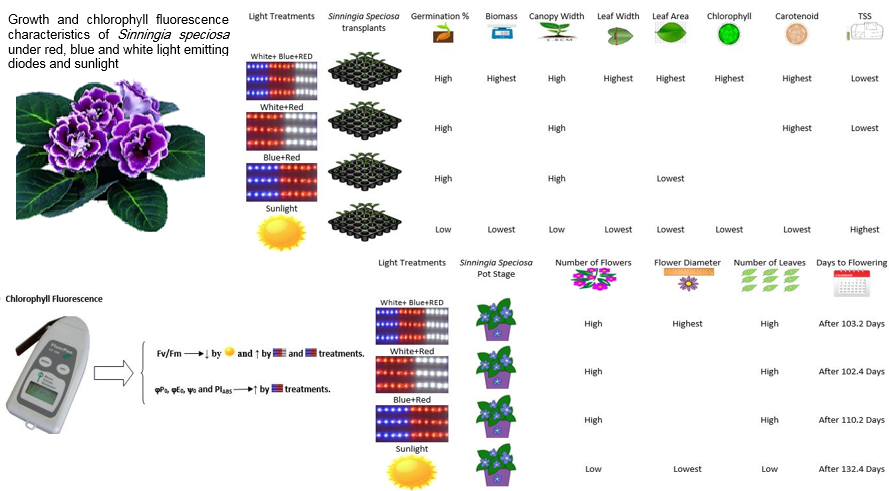Growth and chlorophyll fluorescence characteristics of Sinningia speciosa under red, blue and white light-emitting diodes and sunlight

Published 2020-10-26
Keywords
- Greenhouse,
- growth chamber,
- light-emitting diodes,
- light spectra,
- transplant production
How to Cite
Abstract
Determining the most reasonable LED spectral composition wavelengths on Sinningia speciosa transplants was the main focus of present experiment. Seeds were sown in cell trays under chambers with distinct spectral composition including white+blue+red (WBR), blue+red (BR) and white+red (WR) LEDs with equal light quality proportions (70 µmol m-2 s-1 photon flux density) and under sunlight (400 µmol m-2 s-1 photon flux density) in constant conditions of 14h photoperiod, 70% relative humidity and day/night temperature of 23/18°C for 50 days. In this stage, LED treatments led to higher germination percentage and better results in biomass, canopy width, leaf width and leaf area as well as chlorophyll and carotenoids accumulation were obtained in comparison with sunlight. Extracted and technical parameters of chlorophyll fluorescence induction kinetics and maximum quantum efficiency of photosystem II (Fv/Fm) were decreased by sunlightgrown seedlings. Fv/Fm was induced by WBR and BR treatments, correlated with maximum yield of primary photochemistry (jP0). Quantum efficiencies (jP0, jE0 and y0) and performance index of absorption energy flux (PIABS) were increased in BRexposed transplants. In pot stage, LED-treated plants exhibited better results in morphological features with earlier marketable flowering stage especially under WBR, which can compensate costs of production in marketing stage.





